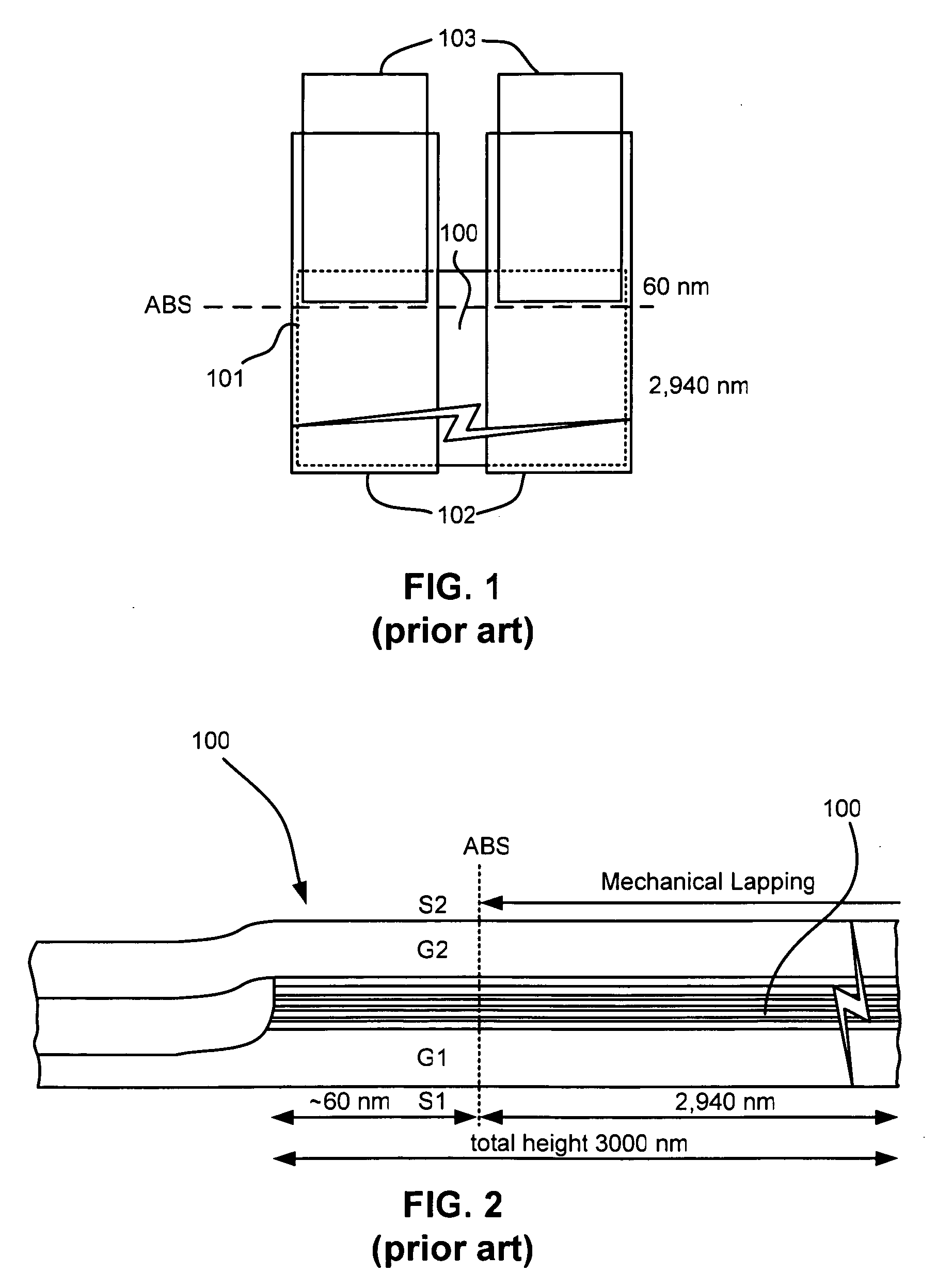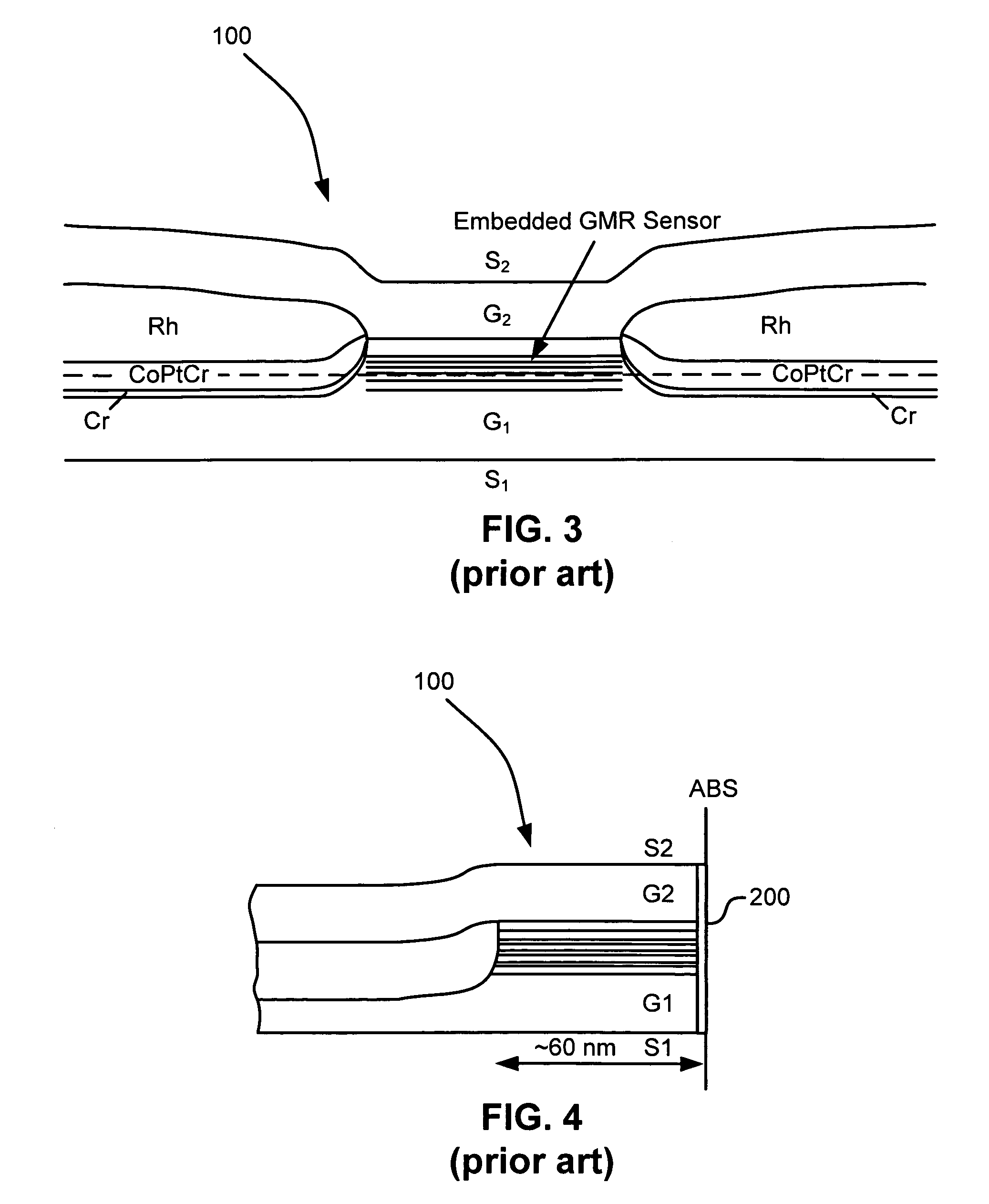Method of forming an embedded read element
a technology of embedded read elements and read elements, which is applied in the field of forming embedded read elements, can solve the problems of affecting affecting the stability so as to ensure the viability of embedded read elements, prevent esd damage, and maintain the resistance of embedded read elements constant
- Summary
- Abstract
- Description
- Claims
- Application Information
AI Technical Summary
Benefits of technology
Problems solved by technology
Method used
Image
Examples
Embodiment Construction
[0028]The following description is the best embodiment presently contemplated for carrying out this invention. This description is made for the purpose of illustrating the general principles of this invention and is not meant to limit the inventive concepts claimed herein.
[0029]Referring now to FIG. 6, there is shown a disk drive 600 embodying this invention. As shown in FIG. 6, at least one rotatable magnetic disk 612 is supported on a spindle 614 and rotated by a disk drive motor 618. The magnetic recording on each disk is in the form of an annular pattern of concentric data tracks (not shown) on the magnetic disk 612.
[0030]At least one slider 613 is positioned near the magnetic disk 612, each slider 613 supporting one or more magnetic head assemblies 621. As the magnetic disk rotates, slider 613 is moved radially in and out over the disk surface 622 so that the magnetic head assembly 621 may access different tracks of the magnetic disk where desired data are written. Each slider ...
PUM
| Property | Measurement | Unit |
|---|---|---|
| height | aaaaa | aaaaa |
| height | aaaaa | aaaaa |
| resistance | aaaaa | aaaaa |
Abstract
Description
Claims
Application Information
 Login to View More
Login to View More - R&D
- Intellectual Property
- Life Sciences
- Materials
- Tech Scout
- Unparalleled Data Quality
- Higher Quality Content
- 60% Fewer Hallucinations
Browse by: Latest US Patents, China's latest patents, Technical Efficacy Thesaurus, Application Domain, Technology Topic, Popular Technical Reports.
© 2025 PatSnap. All rights reserved.Legal|Privacy policy|Modern Slavery Act Transparency Statement|Sitemap|About US| Contact US: help@patsnap.com



